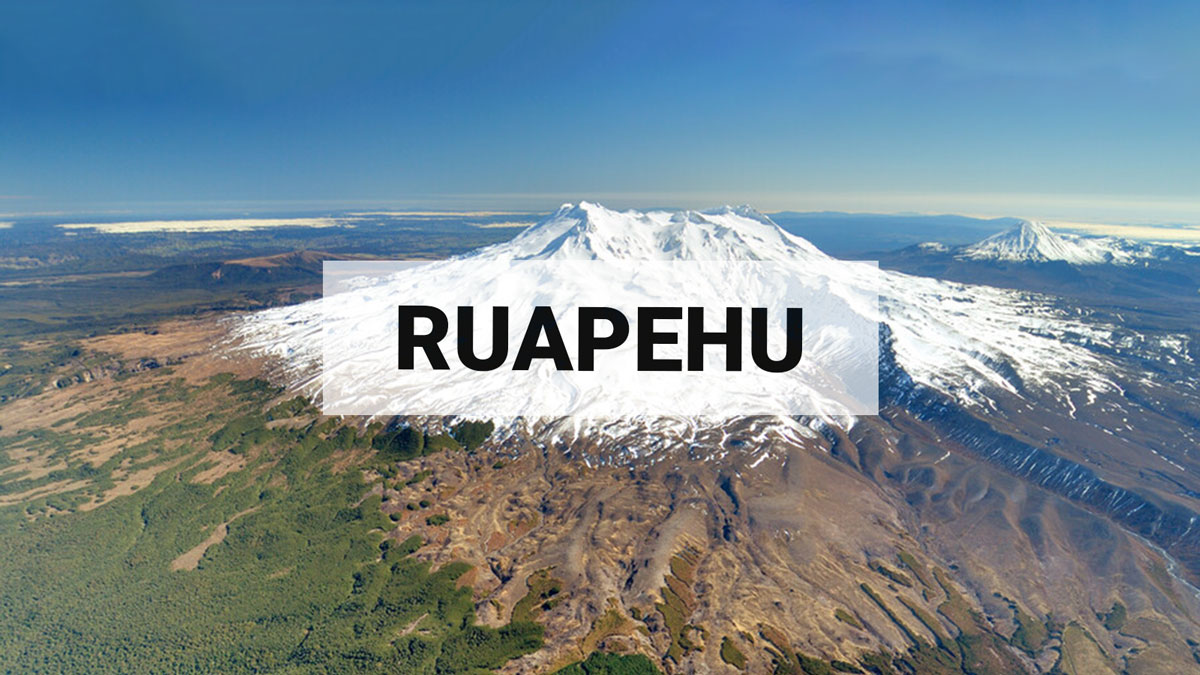
Science Alert Bulletin RUA-1995/10 - Ruapehu Volcano
21 September 1995 - Alert Level raised from Level 1 to Level 2
Background
On 20 September two scientific parties visited Mt Ruapehu to assess the affects of the recent eruptions and the status of activity at Crater Lake, Mt Ruapehu. Weather conditions had prevented any earlier visits to Crater Lake. The present activity at Mt Ruapehu is a continuation of an eruptive episode which commenced in January 1995. Small phreatic (steam) driven eruptions started about 11 January and continued to about 27 February. The Alert status at that time was Volcanic Alert level 2. This was on the old system which started at Volcanic Alert level 1. The lake cooled during March and on 4 April the alert status was reduced to Volcanic Alert level 1. The lake temperature started to rise again on 16 April. It rose rapidly 24 - 26 April, with further phreatic eruptions from 27 April. The Alert status was raised to Volcanic Alert level 2 on 27 April, and minor eruptions continued until late May, when again the lake started cooling.
On 29 June and 3 July vent clearing eruptions accompanied by volcanic earthquakes occurred. These were the largest discrete eruptions from Crater Lake for some years. The temperature of Crater Lake was falling during late July and August. On 12 September the Alert Status was lowered to Vocanic Alert level 1 as the lake was cooling and seismic monitoring showed lower levels of activity, although results from chemical analysis of lake waters indicated fresh lava was available to the Crater Lake system.
Update
On Monday 18 September at 08:07 a moderate vent clearing explosive eruption occurred through Crater Lake. The eruption generated a flood and lahar down the Whangaehu River. A small mudflow also occurred on the upper reaches of the Mangaturuturu Glacier. A second smaller event occurred at 01:22 on 20 September and deposited fine muds about the summit region and produced another, smaller, flood down the Whangaehu River. Both of these events were accompanied by volcanic earthquakes. Observations at Crater Lake on 20 September confirmed the extent and size of the two explosive eruptions. The temperature of Crater Lake has risen about 20°C to 48°C, and frequent small phreatic eruptions are occurring within the lake (15 observed on 20 September). New scoria bombs were found on the lake margins, and a very large overflow was occurring. Lake water chemistry show increased reaction between fresh lava and lake water. Geodetic data has also shown an increase in the diameter of the crater.
Taken together, the above observations indicate that the vent beneath Crater Lake is relatively open, and that the new lava has/is being emplaced at shallow depths beneath and within the lake. Further relatively small phereatic eruption will occur (similar to those in January / February and April / May) with the possibility of ejecta being thrown out of the lake. At this time we have a change in the level of ongoing activity, with minor phreatic eruptions and occasional moderate explosive events.
There is an increased likelihood of larger, possibly damaging eruptions.
Based on the presently available information, in particular the scientific observations of 20 September and data reduction 21 September we recommend that the Volcanic Alert Level at Ruapehu be raised from Level 1 to Level 2. A further increase in Alert level may result if present trends continue at the volcano.
Please note that this formal advice of the change in Alert Status was pre-empted by a Press Release from the Department of Conservation (Tongariro-Taupo Conservancy) on 20 September following informal radio communications between DoC staff, the GNS staff on the volcano, and GNS staff at Wairakei, about the level of hazard to parties intending to climb Mt Ruapehu on 20 September.
C.J.N. Wilson
Volcanology Programme Leader